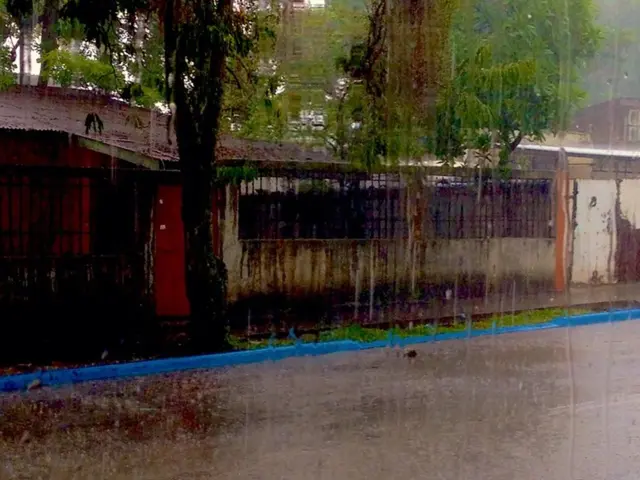Scorching Temperatures Swept through the Eastern Regions on Wednesday - Scorching Temperatures: An Overview of the Extreme Heat Experienced in the Eastern Regions on a Particular Wednesday
In the midst of the ongoing 2025 heatwave, Germany is experiencing scorching temperatures, particularly in the regions of Saxony, Saxony-Anhalt, and Thuringia. According to the German Weather Service (DWD), peak temperatures on Thursday are expected to reach up to around 38°C (100.4°F) in these areas, consistent with the nationwide heatwave forecasts.
The weather pattern during heat days causes warm air packets to accumulate in higher elevations and cool down slowly. However, urban heat island (UHI) effects can increase local temperatures in cities like Dresden (Saxony), Magdeburg (Saxony-Anhalt), and Erfurt (Thuringia) by several degrees Celsius, exacerbating heat stress during peak periods. While specific measured values for these regions on Thursday are not available, the UHI effect is well established.
The heatwave's impact on the affected states is significant. Schools in Saxony-Anhalt send pupils home if indoor temperatures exceed 26°C during heatwaves, while Saxony and Thuringia leave it to individual schools to decide on a "heat day off" or hitzefrei. The intense heat has also led to temporary speed limits on certain Autobahn stretches due to heat-driven asphalt warping.
Historical climate data indicate that summer highs in these regions can reach up to 38°C, affirming that the current heatwave projections align with extreme seasonal maximums.
However, there is some relief in sight. A cold front is expected to move in on Saturday night, causing temperatures to cool down significantly in the east. By Sunday, temperatures will be even cooler, providing much-needed respite from the intense heat. The highest temperatures recorded during the heatwave were 35.9°C in Pabstorf, Saxony-Anhalt, and 35.5°C in Thuringia. Leipzig-Schkeuditz in Saxony reached 34.5°C.
The DWD, led by meteorologist Jens Oehmichen, expects the peak values for this week on Thursday. Despite the high temperatures, tropical nights are still being experienced in higher regions during the heatwave. This means that evenings are not cooling down as much as usual, further intensifying the heatwave's impact on inhabitants and infrastructure.
As the heatwave continues to affect Germany, it is crucial for communities to stay informed and take necessary precautions to stay safe during these extreme weather conditions.
- The ongoing heatwave in Germany, particularly in regions like Saxony, Saxony-Anhalt, and Thuringia, challenges environmental-sciences experts to study the UHI effect more deeply, as it can increase local temperatures in cities like Dresden, Magdeburg, and Erfurt, potentially leading to severe heat stress.
- As the heatwave subsides with the arrival of a cold front on Saturday night, it presents an opportunity for the scientific community to analyze the impact of the heatwave on the affected states, such as Saxony, Saxony-Anhalt, and Thuringia, and to develop more effective strategies for mitigating the effects of extreme weather conditions in the future.







